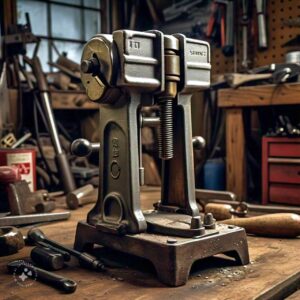Biz of the American vise stand is on a roll as they expand and break new records. Here are the most successful top 10 visa stand ventures this year, ranked in order of their success:
1. Wilton Tools
Wilton Tools stands upon the very backbone in vise for more than 80 years. From Carpentersville, Illinois, this company has been extracting rugged and excellent bench vises. It has been designed for usage in heavy-duty situations and has turned out to be one of the favorite brands among many professionals and hobbyists. Hence, Wilton will always remain at the top for the quality as well as innovation they provide for the people.
2. Orange Vise Company
Established in 2012, the Orange Vise Company has quickly become known, almost out of breath, as a manufacturer of high-performance industrial tools. Located in California, Orange Vise is employed for their precision and dependability. Their bench vises are crafted for meeting demanding requirements in an industrial operation setup, so it show up on the top list of reliable tools favored by professionals.
3. Yost Vises
Yost Vises has been operational since 1908 in the manufacturing of USA-made bench vises, some of the strongest constructions available that call for versatility. That is why it caters to such a wide assortment of professionals and serious DIYers; that is why they still remain a trusted name.
4. Conquest Industries:
These include bench vises, among other industrial tools. Conquest Industries has carved a niche in the business of tool making on known quality and innovation. With commitment to reliable and efficient tool making, Conquest Industries won the hearts of loyal customers and good reputation.
5. Lake Erie Tool works:
Lake Erie Tool Works is a business that deals with the production of excellent and handmade tools for woodworking. Bessey Tools North America It is highly known for high wear and tear and woodworking due to its USA-made products, extreme durability, and precision. It has long been dedicated to be devoted in terms of craftsmanship and quality among the woodworking communities.

6. Bessey Tools North America
Bessey Tools North America is a subsidiary of the mighty German company Bessey. The company was established in 1889. There is a wide range of quality vises, clamping devices, and other cutting tools that have long been known for innovation. This situation allows offering the maximum stability and accuracy to most professionals.
7. Jorgensen
Jorgensen is the brand you know when you are looking for good-quality vises for use in woodworking and metal working. They have different types of vises, from bench vises to a wide range of woodworking vises. Their vises are very strong and durable, designed specifically for heavy-duty use by professionals and hobbyists.
8. Rockler Woodworking and Hardware
Rockler Woodworking and Hardware was started in 1962 as one of the most extensive chains of woodworking stores in the United States. The company serves professional woodworkers and hobbyists alike by supplying tools and materials for both home and commercial use. Among its products are fine-crafting wood and hardware vises. They pride themselves on excellent service as a hallmark of the business.
9. Irwin Tools
Irwin Tools has been one of the leading manufacturers of hand tools and power tool accessories for over a century. The company was producing different products, including bench vises and woodworking vises. Irwin Tools branded itself as the company with new design innovations and quality products suitable for professionals and even do-it-yourselfers.
10. Hovarter Custom Vise
A customized vise manufacturer like Hovarter Custom Vise makes high-quality, made-to-order vises that find application in woodworking and metalworking. A bit specific in the model with respect to the precision and durability so that it is very admired by the experts. Hovarter Quality and innovation have built up an excellent reputation in the industry.
Conclusion
The USA wholesale market is represented by quality, innovation, and customer satisfaction-based organizations. The quality, spectacular, innovative, cheaper, technologically good value, best material, extraordinary, and outstanding characteristics were exemplified by all these companies: Wilton Tools, Orange Vise Company, Yost Vises, Conquest Industries, Lake Erie Tool Works, Bessey Tools North America, Jorgensen, Rockler Woodworking and Hardware, Irwin Tools, and Hovarter Custom Vise, as they are the top ten successful vise stand companies of 2024. They will be exhibiting excellence to continue dominance in the market fields and provide for the changes that customers desire in their needs.
They have come to earn good reputations regarding excellent quality and reliability, which places them in a leadership position at the wholesale market. Whether one is a professional or a mere hobbyist, one can find in their products what would help him reach his desired goals.


